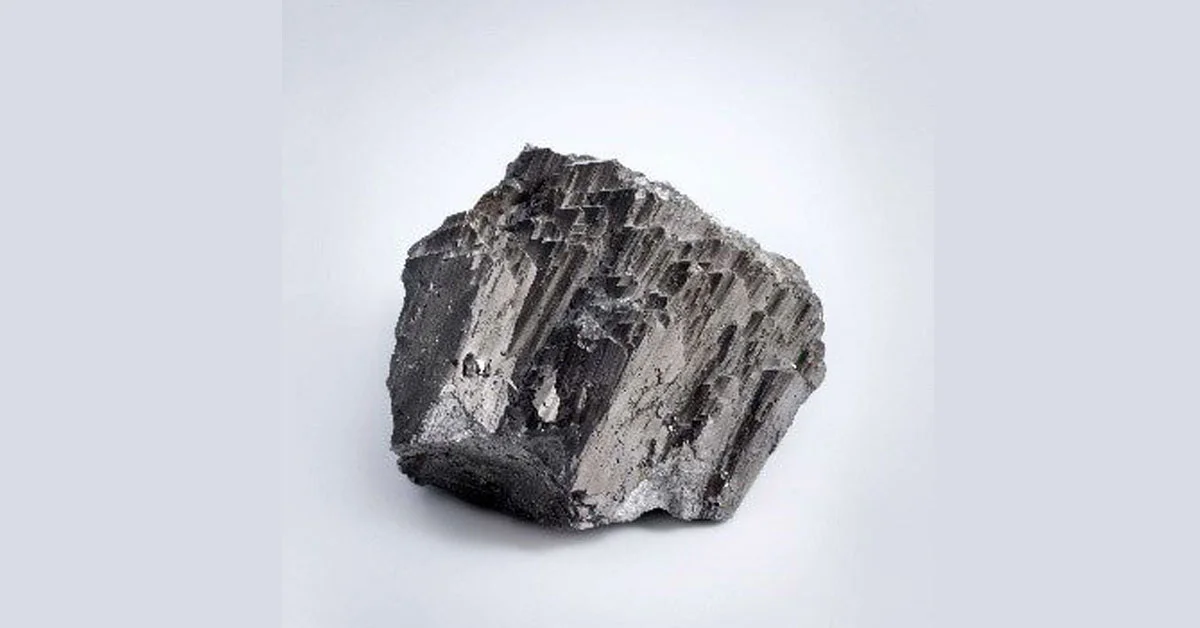Arsenic can be defined as a semi-metallic (metalloid) naturally occurring chemical which is found all around the world in groundwater. The origin of arsenic can be traced back to the earth’s crust. Since arsenic is a metalloid, it does share a lot of characteristics with metals (Paddock, 2018).
Background
Like other toxicants, arsenic is also naturally occurring and a major component of the earth and its crust. Arsenic is extensively spread out in the atmosphere including air, land, and water. Arsenic is also termed as the most toxic in its inorganic form. Individuals came in contact with high levels of arsenic through food made with contaminated water, drinking arsenic-contaminated water, smoking tobacco, and fertilizing food crops. Arsenic is also included in the list of WHO’s (world health organization) 10 chemicals of major public health concern considering its toxicity and adverse health effect.
The concentration of arsenic can vary from region to region as some regions have higher arsenic concentrations than others ones. The higher concentration can be because of various factors like mining, usage of pesticides, as well as human activity (WHO, 2018). As discussed above, arsenic is a metalloid and therefore has some properties of metals, which are harmful and injurious to human health and can lead to several complications. Arsenic contamination in groundwater is a major issue all around the world as drinking contaminated water is dangerous. Being a carcinogen, arsenic is considered one of the most hazardous chemicals on earth.
The WHO’s (world health organization) provisional guideline of arsenic in drinking water which is considered safe is 10ppb (micrograms) however more than 100 million of the world’s population is at risk for consuming a higher percentage of arsenic in contaminated water. Also, more than 45 million of the world’s population is consuming contaminated water with an arsenic percentage of more than 50 ppb (micrograms). These high percentages are from people living in Asia in developing and relatively poorer countries. At the present rate, arsenic due to its increased concentration is affecting more than 150 million people around the world.
Arsenic has unfortunately become a part of the food chain through the water as water is a necessity of living organisms and through water, it enters the human body (Shankar, 2018). As discussed before, arsenic is a naturally occurring metalloid but its contamination in the groundwater can be because of both naturally occurring as well as anthropogenic (human) activities.
Arsenic can enter the water systems naturally because of its origin in the rocks. It can also enter the water systems from industrial and horticultural pollution and disposal. It is generally believed and accepted that arsenic dissolves and breaks out of rocks whenever the levels of groundwater are low. In the United States, every year, arsenic in large quantities is released into the environment.
Arsenic continues to stay in the environment once it is released. Through rain, snow, and steady settling, arsenic is removed from the air. Arsenic enters the groundwater once it is on the ground or in the surface water levels. Elevated levels of fertilizers and industrial waste can result in high arsenic levels in wells. High levels of arsenic in the wells ultimately indicate extensive use of chemicals and fertilizers containing arsenic (U.S.DOH, HS, 2015).
Presence of Arsenic; Reasons:
The presence of arsenic in the environment due to anthropogenic activities is quite elevated because arsenic is used for the manufacturing of a lot of things. In foods, meat, fish, poultry, and shellfish are also considered sources of arsenic however the arsenic level concentrations from these are much lower if compared to the groundwater. In industries, arsenic is widely used in the manufacturing and processing of papers, glass, metal adhesives, etc. it is used as an alloying agent.
Different minerals like sulfide, oxide, phosphate, and carbonate contain arsenic and can be found in sediments. Mining of these minerals and rocks containing arsenic results in the contamination of the environment which ultimately is transferred into the water reservoirs. Burning of fossil fuels such as coal also has a large effect as these fossil fuels when burned release arsenic into the environment which ultimately enters the surface water and groundwater (Shankar, 2018).
One of the many reasons for arsenic contamination in groundwater can be population growth. The world’s population today is growing at an alarming rate and this population growth is also affecting water consumption patterns as population increase has resulted in increased water consumption. The increased water consumption levels result in lower groundwater levels. The decreased groundwater level includes sediments and arsenic from rocks which contaminates the water and turns it impure. The lack of clean water and its absence results in people drinking the contaminated water and getting affected by it.
Studies have estimated that around 108 countries all around the globe are affected and experiencing arsenic concentrations in groundwater. Of these 108 countries, many of them got affected by arsenic in the last decade. The regions affected the most by arsenic contamination include Asia, Europe, Africa, South America, and Australia. Around the world, approximately 280 million people drink contaminated water and are at risk of arsenic poisoning, and from these 280 million; 180 million people are from Asian countries (WHO, 2018).

Countries most affected:
The Asian countries which are most affected by arsenic contamination include Pakistan, India, Bangladesh, Nepal, Burma, Thailand, and Cambodia. Groundwater extracted from unconsolidated sedimentary is contaminated with arsenic in these countries. In these countries, the arsenic limit exceeds the safe limit set by the WHO (world health organization).
Pakistan is one of those countries in the world which is most affected by arsenic contamination. Nearly 50 to 60 million of Pakistan’s population is at risk of arsenic poisoning due to arsenic-contaminated water. Studies have shown that these 50 to 60 million populations consume water that has an arsenic concentration of more than 50 micrograms (5 times more than the safe limit) (Gugliemi, 2017).
Arsenic in Lahore:
Lahore the capital of the province of Punjab, Pakistan, and a major metropolitan city of Pakistan exceeds the population level of 11 million and continues to grow with each passing day. Recent studies have pointed out how the provincial capital is experiencing arsenic contamination in the groundwater; therefore, samples of groundwater from different towns of Lahore were taken to identify the arsenic contaminations. The arsenic concentrations from these tests ranged from 2-111 micrograms which are also 10 times more than the safe concentration.
Health Impacts:
Since arsenic is a toxicant metalloid, it has serious effects on human health which can prove to be fatal. The health effects of arsenic can be divided into two sets; acute effects and long-term effects.

Acute:
Acute arsenic poisoning symptoms can include diarrhea, vomiting as well as abdominal pain. In extreme cases of arsenic poisoning, muscle cramp, numbness, and even death can result.
Long Term:
The long-term effects of exposure to elevated levels of arsenic through water or food include changes in the skin, pigmentation changes, and hardening of the skin on hands and feet as well as skin injuries/lesions. The symptoms can be a result of exposure of more than 5 years and can result in skin cancer in severe cases. Arsenic in drinking water has been declared carcinogenic for humans and its long-term exposure can lead to bladder cancer and lung cancer both of which can also lead to death.
Exposure to inorganic arsenic can lead to several other long-term health effects such as diabetes, skin disorders, and cardiovascular as well as pulmonary diseases, arsenic long-term exposure also leads to diseases of blood vessels in legs and feet. Arsenic is also often associated with reproductive disorders as well as adverse pregnancy outcomes along with infant mortality and the health of children. It is also associated with a young mortality rate in children as a result of internal disorders and cancers with certain impacts of high arsenic exposure to memory, cognitive development, and intelligence of young adults (Shankar, 2018).
Arsenic exposure also leads to Arsenicosis which has dire impacts on different aspects of life including livelihood and family life. Arsenicosis leads to deterioration in physical appearance which has dire impacts on women as they are socially excluded. Long-term exposure leads to stress and several other disabilities in individuals. The tasteless, colorless, and odorless properties of arsenic make it hard for individuals to detect.
COP27
COP27, the 27th United Nations Climate Change Conference of the Parties, convened in Egypt in November 2022, focusing on global collaboration to accelerate climate action and address critical environmental challenges.
Balancing Arsenic Concerns and Global Ecosystems
In addressing the pervasive issue of arsenic contamination in the groundwater of major cities in Pakistan, the urgent need for a comprehensive approach is underscored, emphasizing not only the health impacts but also the vital requirement for a balance in blue and greens, recognizing the interconnectedness of water sources and land distribution globally.
Preventive Measures:
The most important thing to do for the countries that are affected by arsenic is the further prevention of arsenic in any way by provisioning of safe and pure water supply for food, drinking, and crops.
Following are the measures that can be taken for the prevention of high levels of arsenic.
- First of all, creating awareness regarding arsenic is important because people still don’t know about the impacts of arsenic on health. It is important to educate people about the effects and impacts of drinking and using contaminated arsenic and exposure to arsenic.
- It is important to come up with substitutes for the usage of arsenic-contaminated water. For example; water with high arsenic concentration can be used for bathing and washing clothes purposes.
- Similarly, low arsenic concentration water can be used for drinking and food purposes.
- It is important to discriminate clean water from arsenic-contaminated water.
- Blending can be another solution; the blending of high arsenic concentration water with low arsenic concentration water can result in a safe and perfect balance.
- Domestic and centralized arsenic removal systems and plants should be installed to eliminate arsenic from contaminated water. Governments and organizations should take steps toward eliminating arsenic from groundwater (WHO, 2018)

